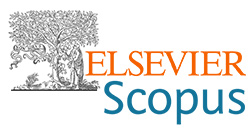Binders for pressed products based on phosphogypsum waste
DOI:
https://doi.org/10.5937/zasmat2204437DAbstract
The article is devoted to the issues of obtaining pressed building materials based on dihydrate phosphogypsum. Dihydrate phosphogypsum after mechanical activation in a ball mill acquires the ability to harden in pressed specimens. After activation of dihydrate phosphogypsum in a ball mill and its pressing at a pressure of 30 MPa, the strength of specimens increases by 6...8 times compared to non-activated specimens and reaches 25...30 MPa. There is found the influence of various chemical admixtures on binding properties of activated phosphogypsum and there are shown possibilities of water resistance improvement and increasing of other properties characterizing this material. There is studied an effect of aggregates on the building and technical properties of artificial stone made of phosphogypsum and peculiarities of its structure and change under the influence of different factors.Keywords:
dihydrate phosphogypsum, binders, compression, water resistance, strengthReferences
Blokhin, Y., Bondarenko, M., Katunina, A. (1953)Proceedings of NIUIF, Moscow: NIUIF, 243, 33-38
Budnikov, P., Gulinova, L., Torchinskaya, S. (1955)Ukr. chem. journal, 21 (2), 274-282
Budnikov, P. (1924)News of the Ivanovo-Voznesensky Polytechnic Institute, 1 (32), 287
Budnikov, P., Matveev, M., Tkachenko, K. (1951) On the issue of water resistance of gypsum building products.Reports of the Academy of Sciences of the Ukrainian SSR, 2, 121-129
Doroshenko, A. (1995) Pressed gypsum modified with hydrophobic additives, Resource saving and ecology of the industrial region: Abstracts of the reports of the international conference. Makeevka, p.60-61
Dvorkin, L., Lushnikova, N., Sonebi, M. (2018) Application areas of phosphogypsum in production of mineral binders and composites based on them: a review of research results.MATEC Web Conf., 149, 01012
https://doi.org/10.1051/matecconf/201814901012
Dvorkin, L., Dvorkin, O., Ribakov, Y. (2012) Mathematical Experiments Planning in Concrete Technology. New York, USA: Nova Science Publishers
Gasan, Y., Doroshenko, A., Sulkonsky, Y. (1994) Modified gypsum material of increased strength and water resistance, Improvement of building materials, technologies and methods for calculating structures: Abstracts of the reports of the international conference. Sumy, p.61-62
Gulinova, L., Ipat'eva, V. (1954) Gypsum non-fired cement and products from it. Kyiv: Ed. Acad. Archite. Ukrainian SSR, p.27
Kuryatnyk, T., Angulski, da L.C., Ambroise, J., Pera, J. (2008) Valorization of phosphogypsum as hydraulic binder.Journal of Hazardous Materials, 160 (2-3), 681-687
https://doi.org/10.1016/j.jhazmat.2008.03.014
Mashifana, T. (2019) Chemical treatment of phosphogypsum and its potential application for building and construction.Procedia Manufacturing, 35, 641-648
https://doi.org/10.1016/j.promfg.2019.06.007
Pereira, V., Geraldo, R., Cruz, T., Camarini, G. (2021) Valorization of industrial by-product: Phosphogypsum recycling as green binding material.Cleaner Engineering and Technology, 5, 100310
https://doi.org/10.1016/j.clet.2021.100310
Rashad, A. (2017) Phosphogypsum as a construction material.Journal of Cleaner Production, 166, 732-743
https://doi.org/10.1016/j.jclepro.2017.08.049
Ratinov, V., Rozemberg, T., Smirnova, I. (1984) On the mechanism of action of admixtures - concrete hardening accelerators.Concrete and reinforced concrete, 6, 282-285
Ratinov, V., Rozemberg, T. (1996) Concrete admixtures. M: Stroyizdat
Ren, T., Zhu, J., Liu, W., Zhu, X., Yang, J. (2012) Water resistance of composite binders containing phosphogpysum with different pretreatment processes.Advances in Cement Research, 24 (2), 111-120
Downloads
Published
Issue
Section
License
Copyright (c) 2022 CC BY 4.0 by Authors

This work is licensed under a Creative Commons Attribution 4.0 International License.






